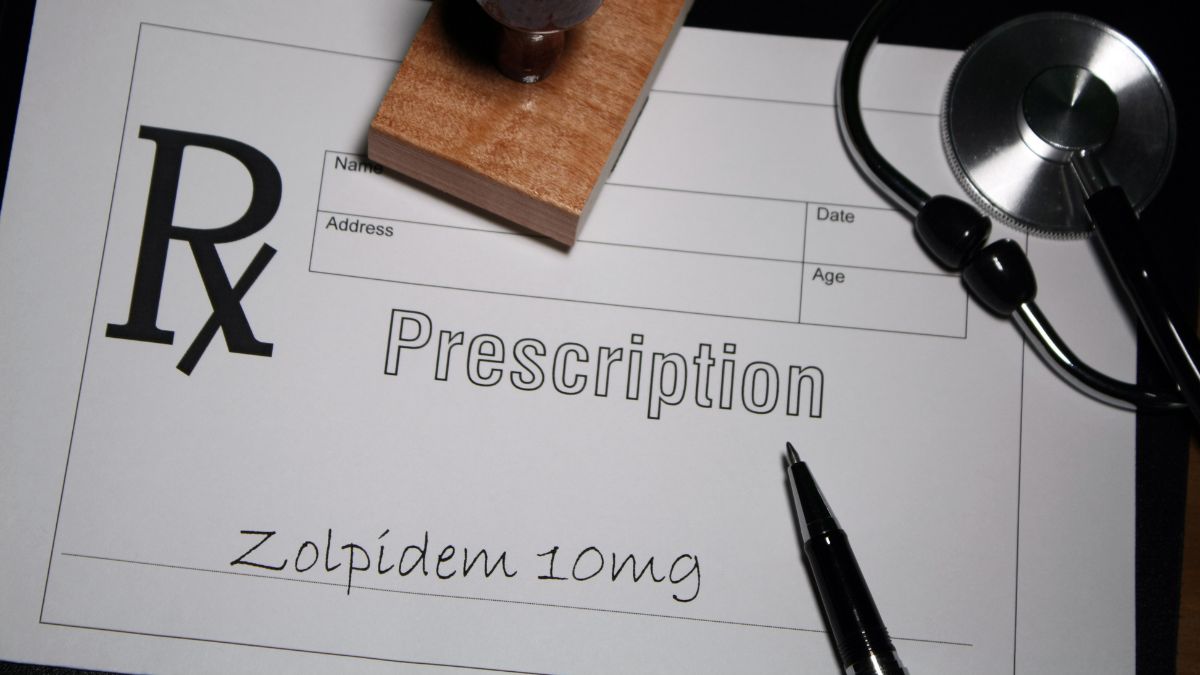Methadone is key to medication-assisted treatment (MAT) for opioid use disorder. It is a prescription medication that is an opioid in itself and, therefore, has the potential for misuse. When a person stops taking methadone after they have been taking it for a while, they experience withdrawal. While methadone withdrawal symptoms can be intensely unpleasant, they can be treated.
In this blog, we will explore what you can expect from methadone, the methadone withdrawal timeline, and more so that you can understand whether it is the right fit for you in treating opioid misuse in the long run.
What Is Methadone and Why Is It Used?
Methadone is a prescription opioid that is a painkiller in itself and is also used to treat addiction to other opioids like codeine, morphine, and heroin. It is even effective in treating addiction to semi-synthetic opioids like hydrocodone and oxycodone. It works by changing how your brain responds to pain and also blocks the euphoric effects of these other opioids.
Methadone is available as a pill, liquid, and wafer; it must be taken once a day. When taken as prescribed, methadone is safe and effective. Methadone enables you to recover from opioid use and reclaim your life from the grip of these substances. However, it does come with a potential for misuse. This is why methadone treatment is tailored to your needs, medical history, and lifestyle factors, and you must follow your doctor’s prescription to a tee.
Call Design for Recovery to Begin Your Healing Journey!
Reach out to our team to discuss sober living options and next steps toward a healthier routine.
Timeline of Methadone Withdrawal
When methadone is taken as prescribed, it is safe and highly effective in treating both pain and opioid use disorder. But the biggest tell-tale signs of methadone abuse are methadone withdrawal symptoms. These symptoms do not begin immediately but seep in within 24-36 hours after the last dose. Furthermore, how long does methadone withdrawal last varies from person to person. For some, the symptoms can subside within 2-3 weeks, but for others, it can even take up to 6 months.
Immediate Methadone Withdrawal Symptoms:
Here are the immediate methadone withdrawal symptoms:
- Anxiety
- Restlessness
- Sweating
- Runny nose
- Yawning
- Sleeping troubles
- Fatigue.
Additional Methadone Withdrawal Symptoms:
If methadone withdrawal is not treated immediately with methadone detoxification (detox), it worsens after 3 days, when a person can experience the following additional symptoms:
- Intense cravings
- Vomiting
- Diarrhea
- Muscle aches and pains
- Cramps
- Goosebumps
- Depression.
Unfortunately, methadone withdrawal can make it seem like the only way to reduce them is to take more methadone. But this is just a temporary relief and dangerous in itself, as it can lead to methadone abuse.
Methadone Overdose
Methadone is a very potent opioid. Even after its effects subside, its active ingredients can stay in your body for a day. This is why your doctor will prescribe the dosage accordingly, and if you take more than what is prescribed, it can also lead to a methadone overdose. Methadone overdose is highly dangerous and can manifest in the following ways:
- Constricted pupils
- Blueish fingernails and lips
- Cold, clammy skin
- Vomiting
- Stomach spasms
- Muscle twitches
- Weak pulse
- Breathing difficulties
- No breathing
- Confusion and disorientation
- Drowsiness
- Fatigue
- Lightheadedness.
If you suspect a methadone overdose, contact emergency providers (like 9-1-1 in the U.S.) immediately. If methadone overdose is not treated immediately with an antidote, it can lead to other complications like seizures, pneumonia, muscle damage, brain damage, permanent disability and, in rare cases, even death.
Effective Treatment Options for Methadone Withdrawal
Methadone withdrawal can be unpleasant, and it can feel like the only way to treat it is with more methadone. But this can lead to other risks like an overdose. Therefore, if you experience methadone withdrawal symptoms, call your doctor immediately. Do not attempt to treat it on your own.
Methadone withdrawal can be treated in the following ways:
Medicines:
Your doctor can prescribe medications like buprenorphine, clonidine, and naloxone that relieve your symptoms and will shorten the methadone withdrawal timeline. You can recover fully from methadone withdrawal when you use these medications as prescribed by your doctor.
Guided Methadone Therapy:
Your doctor monitors your methadone intake in a supervised setting to ensure your methadone detox process is safe and effective. This therapy will be continued as long as your body needs methadone, after which it will be stopped.
Contact Design for Recovery Today!
Fill out our quick form to connect with a peer mentor and learn how our sober living community supports accountability, structure, and personal growth in recovery.
When to Seek Professional Help During Withdrawal?
During the initial stages of the methadone withdrawal timeline, you can manage it on your own by seeking social support, distraction, or doing things that are enjoyable. However, do be in touch with your doctor so that they can guide you accordingly.
If your methadone withdrawal symptoms worsen by day 3, then treatment involving medication management or guided methadone therapy can be required. In this case, reach out to your doctor immediately and do not attempt a methadone detox at home.
Tips to Manage Methadone Withdrawal Safely
Methadone withdrawal is a painful experience. Given how unpleasant it can be and the risk of an overdose, it is almost always treated in a medical setting under the supervision of your doctor. But here are some tips you can use to manage it in the initial stages and prevent future methadone withdrawal as well:
Hydration:
Keep your body hydrated at all times. Drink plenty of water and other fluids so as to prevent dehydration.
Seek Rest:
As methadone withdrawal can lead to insomnia, you can be prescribed sleeping medication. But otherwise, you can avoid drinking caffeine or alcohol before sleep and engage in deep breathing exercises for a better quality of sleep.
Physical Exercise:
Regular physical exercise boosts your energy levels and your mood as well. This can help with methadone withdrawal.
Social Support:
Cultivate a strong social support system who can keep track of your methadone use and discourage you from taking more than what is prescribed. At the same time, you can also attend Narcotics Anonymous (NA) recovery meetings to learn from those on a similar recovery journey as you regarding safe methadone use.
Consider Counseling:
Supportive counseling can also help in preventing future methadone misuse. It will equip you with coping strategies and other life skills so that you do not have to use methadone outside of a doctor’s prescription.
Preventing Relapse After Methadone Treatment
Once you recover from methadone withdrawal, it is crucial that you do not return to opioid use or even methadone use again. The key here is to maintain your recovery by following your aftercare plan, involving ongoing therapy/counseling, medication management, and social support. You can also seek out NA recovery meetings where you can benefit from shared experiences and learning while also taking ownership of your own recovery.
At Design For Recovery, we understand the need for integrated care options to empower you as you recover from opioid use. To this end, we offer top-quality sober living homes defined by a substance-free, structured environment where you can relax and recover after your rehabilitation (rehab) so as to strengthen your sobriety. You receive clinical support and an understanding community that will be there with you every step of the way in this journey toward your sober future.
If you are recovering from opioid use, please do not hesitate to reach out to us today. We can take every step going forward together as a family.
- What Is Methadone and Why Is It Used?
- Timeline of Methadone Withdrawal
- Effective Treatment Options for Methadone Withdrawal
- When to Seek Professional Help During Withdrawal?
- Tips to Manage Methadone Withdrawal Safely
- Preventing Relapse After Methadone Treatment
Begin Lasting Sobriety Now!
Frequently Asked Questions
Methadone withdrawal is a difficult process. As such, it is not recommended that you attempt to go through it on your own. Inform your doctor of any problems you are experiencing so that they can assist you in the treatment of opioid withdrawal symptoms.
Your medical provider will start you on methadone detox and will likely provide medications to treat the symptoms of methadone withdrawal. These treatment options substantially increase the likelihood of a complete recovery. Doctors typically prescribe buprenorphine, naloxone, clonidine, and other medications, which reduce the length of the withdrawal process and relieve some of the symptoms associated with it. You might also find it helpful to talk to other people going through something similar in support groups.
People often attempt to get through the methadone withdrawal process on their own. However, it is not advisable to detox from methadone at home. In most cases, withdrawal from opiate drugs does not pose life-threatening conditions, but the process can be unpleasant and cause adverse effects, such as severe respiratory depression. If medical intervention is not sought to prevent opioid withdrawal symptoms, it can also result in cravings and relapse. In fact, relapse is one of the greatest risks of quitting methadone cold turkey.
As treatment for opiate addiction, detoxification can occur in hospitals, detox centers, methadone clinics, or inpatient treatment centers as part of a larger treatment program. During medical detox, individuals experiencing withdrawal will be monitored by healthcare specialists and, if necessary, given medications to manage specific symptoms.
Tapering is the safest way to detox from methadone, which involves gradually reducing the dose over time. Tapering can help reduce withdrawal symptoms. Your physician is in the best position to determine and start a schedule for gradually decreasing the amount of methadone you take. A professional treatment provider should always supervise weaning or tapering to monitor withdrawal and help the patient find the best way to regulate doses.
Moreover, medical detox helps people get through withdrawal safely, but doesn’t treat the underlying causes of substance abuse. Detox should ultimately be followed by comprehensive addiction treatment that includes behavioral therapy and other treatment methods, such as 12-step groups. Sober living homes can provide these recovery options as they provide structure designed to help individuals regain sobriety and rebuild their lives. This mix of therapeutic modalities aims to change maladaptive behaviors and build social support and stress-management abilities.
Methadone is a component in medication-assisted treatment (MAT) used to treat heroin addiction. Because it is a long-acting opioid, it blocks the euphoric effects caused by heroin by binding to the same opioid receptors in the brain. Prescription methadone works to prevent opioid withdrawal and cravings, thereby facilitating recovery for people with heroin addiction and other opioid addictions. Substance abuse research shows that methadone reduces the mortality rate associated with opioid addiction. The same study also revealed that taking methadone in a closed setting, followed by continuing treatment, lowers the risk of relapse.
Methadone treatment is also known as methadone maintenance therapy or replacement therapy. It does not treat heroin addiction by itself and is only one component of a comprehensive treatment plan.
Methadone belongs to a Drug Enforcement Administration (DEA) classification known as Schedule II drugs. This means that this type of pain medication has a high potential for abuse and can induce physiological dependence in the user. If you abuse methadone or even take it as prescribed, you may become dependent on it and experience withdrawal symptoms if you abruptly stop taking it.
Methadone addiction can also develop because the medicine relieves pain. When tolerance occurs, more of the drug is required to get the same effect. Methadone also increases euphoric effects in persons engaging in illicit drug use.
https://www.hopkinsmedicine.org/health/conditions-and-diseases/opioid-use-disorder
https://go.drugbank.com/drugs/DB00333
https://www.ncbi.nlm.nih.gov/books/NBK310658/
https://americanaddictioncenters.org/addiction-medications/methadone
https://medlineplus.gov/ency/article/002679.htm







Written By
David Beasley